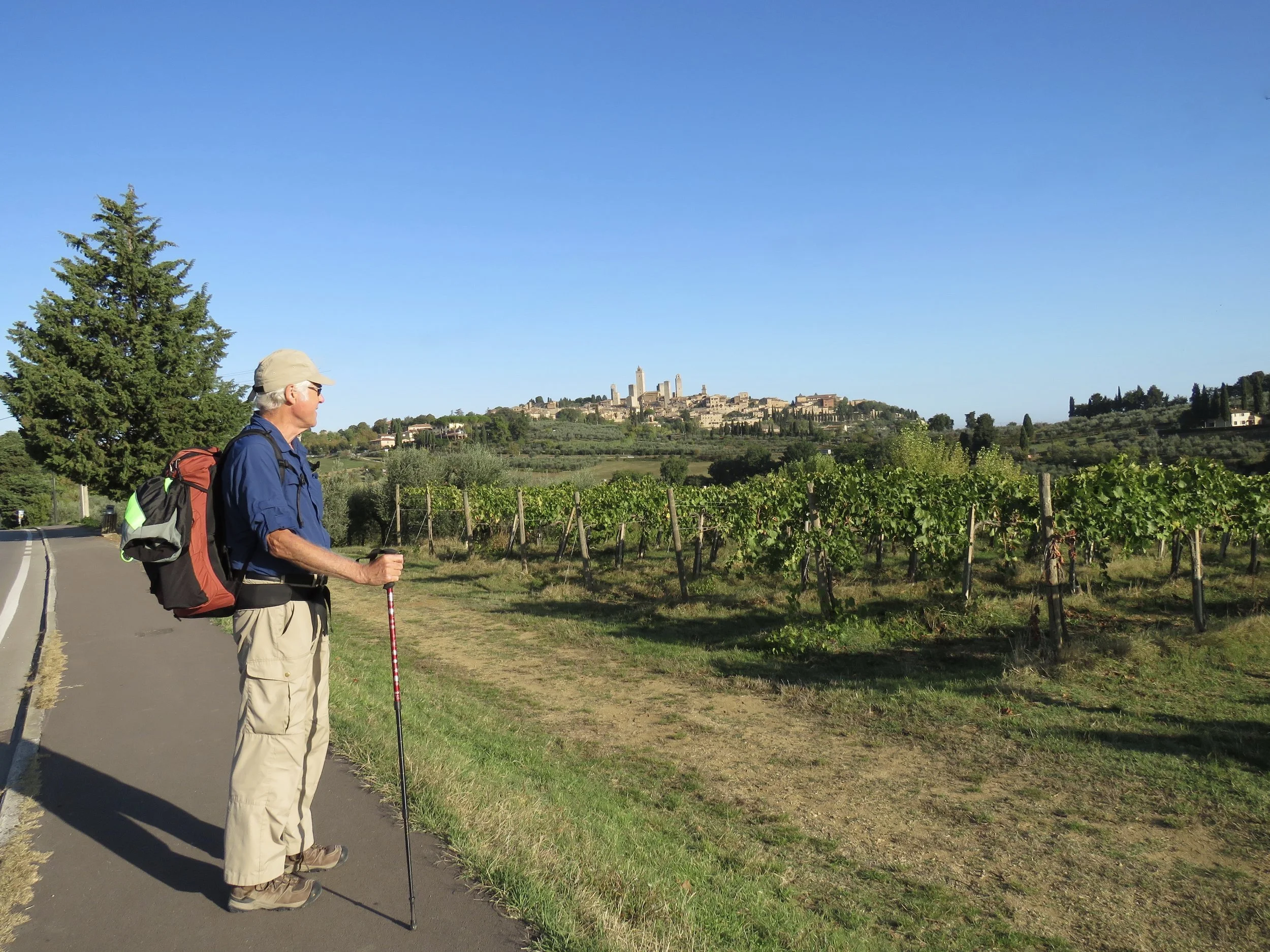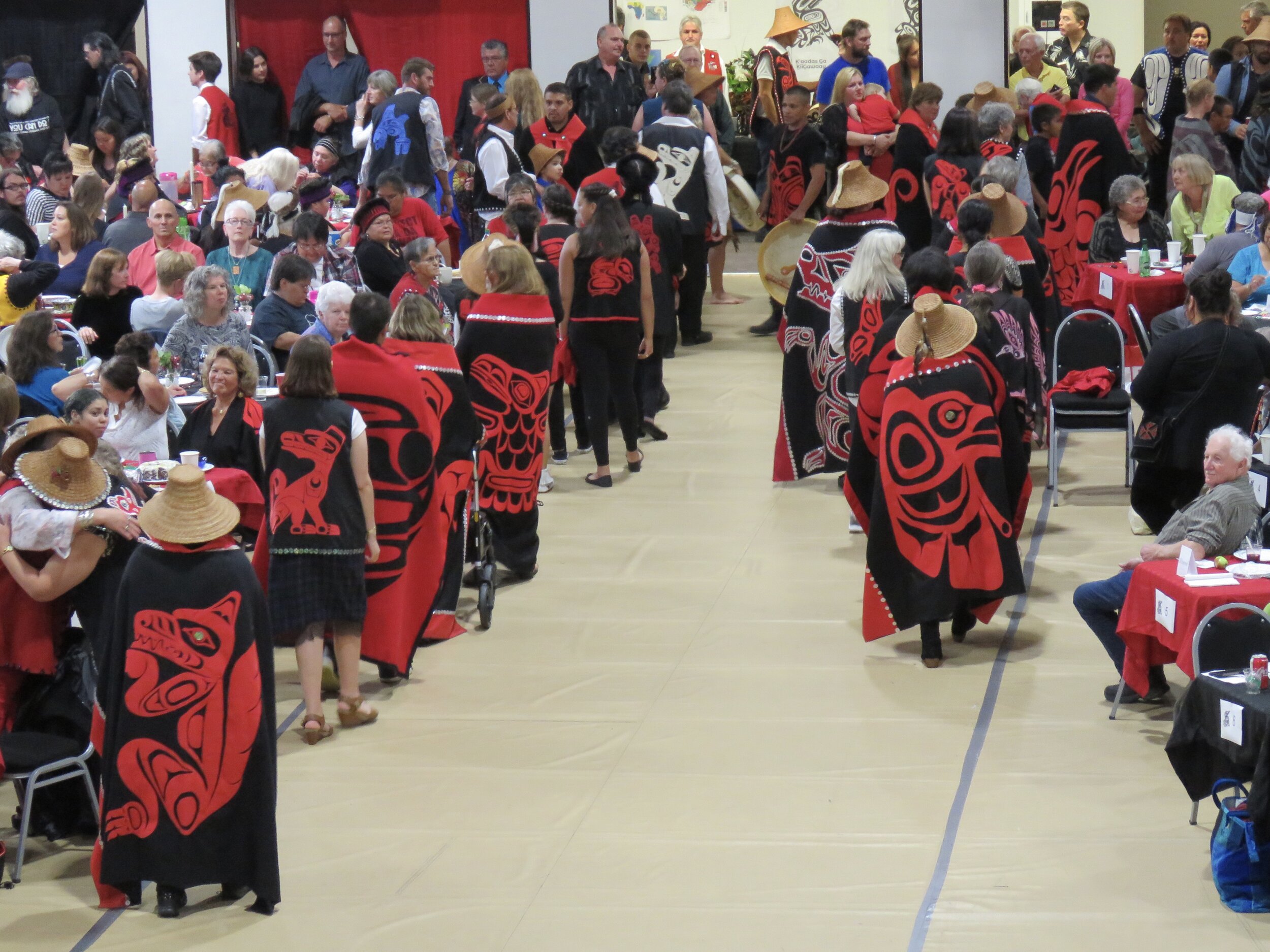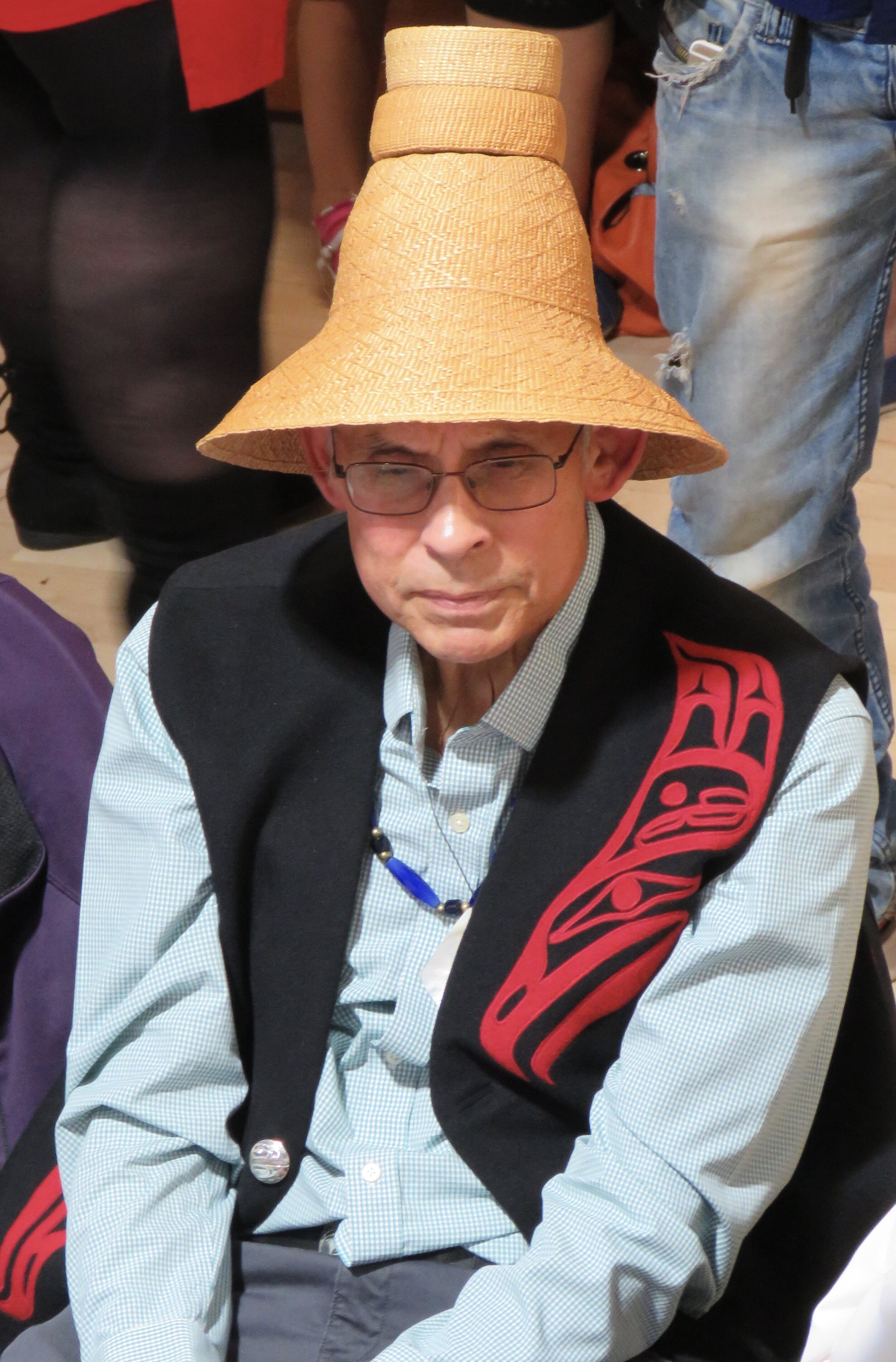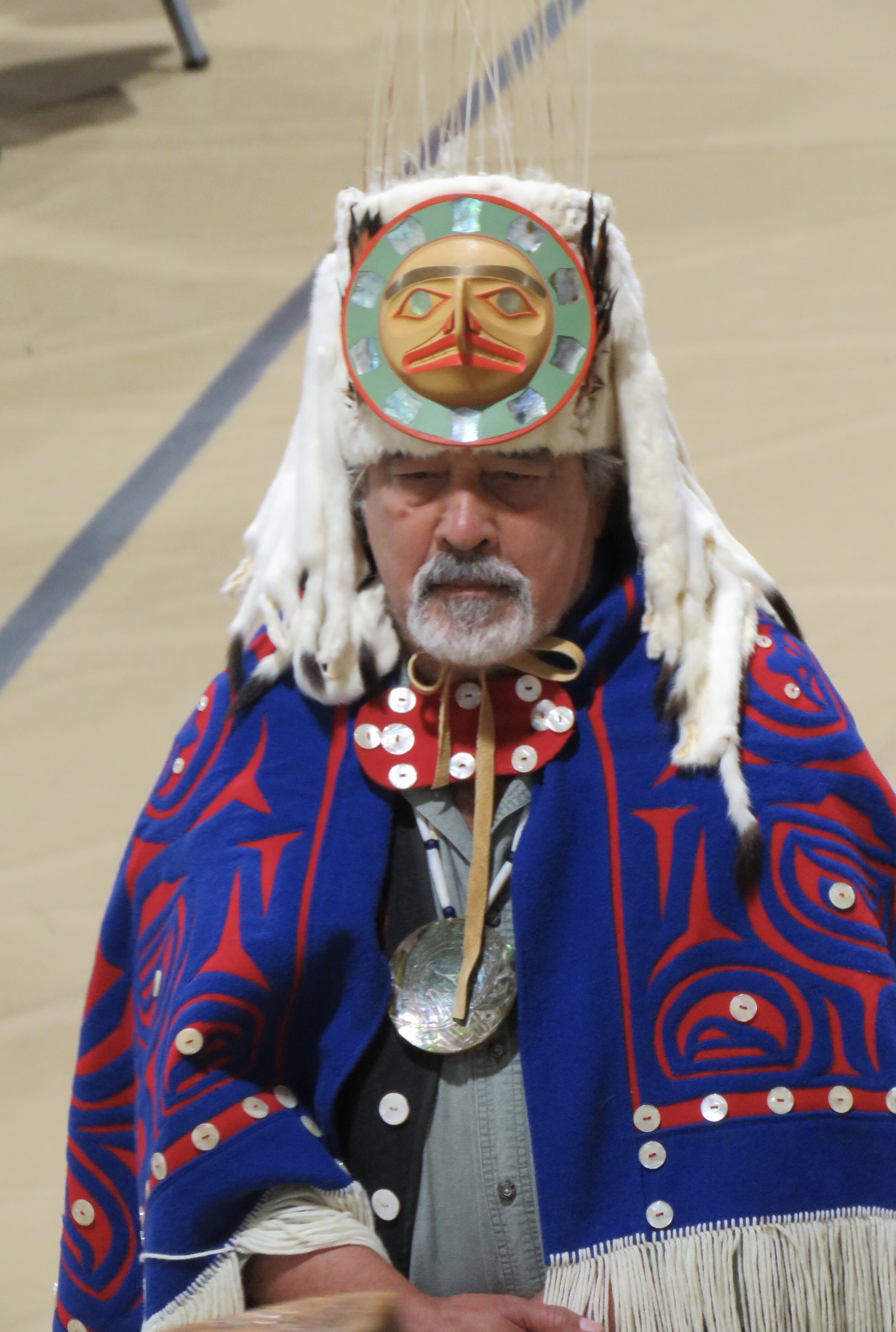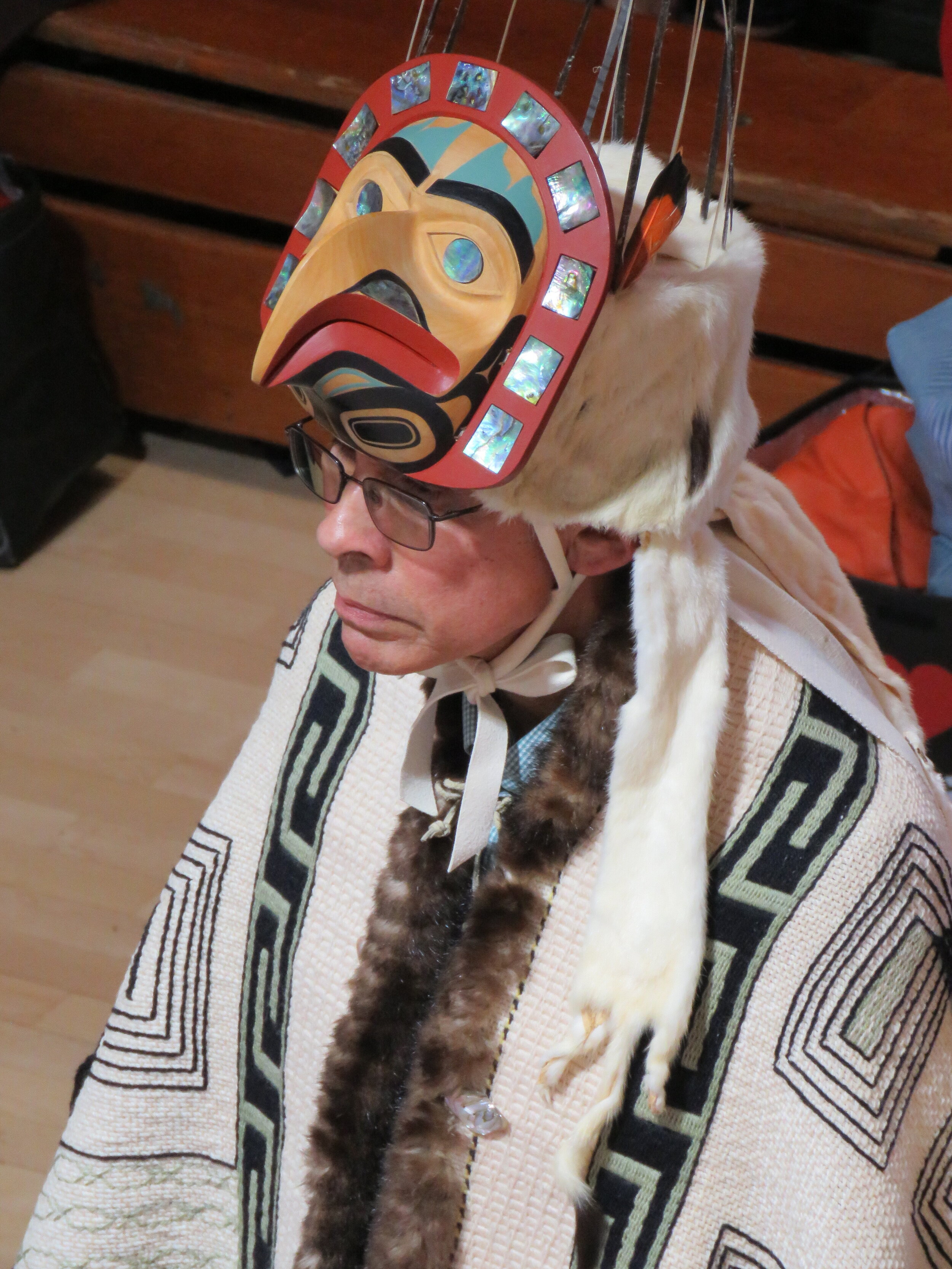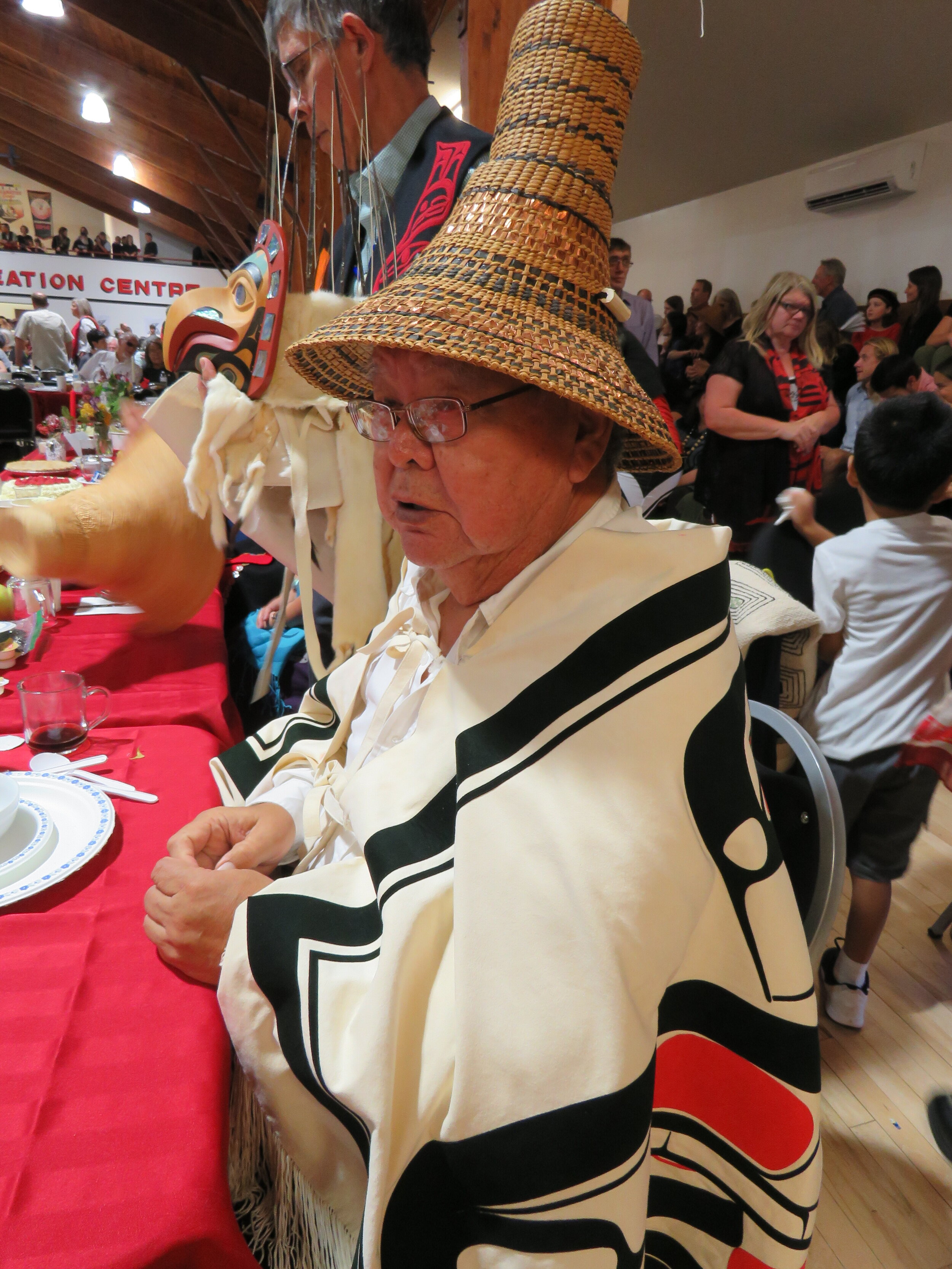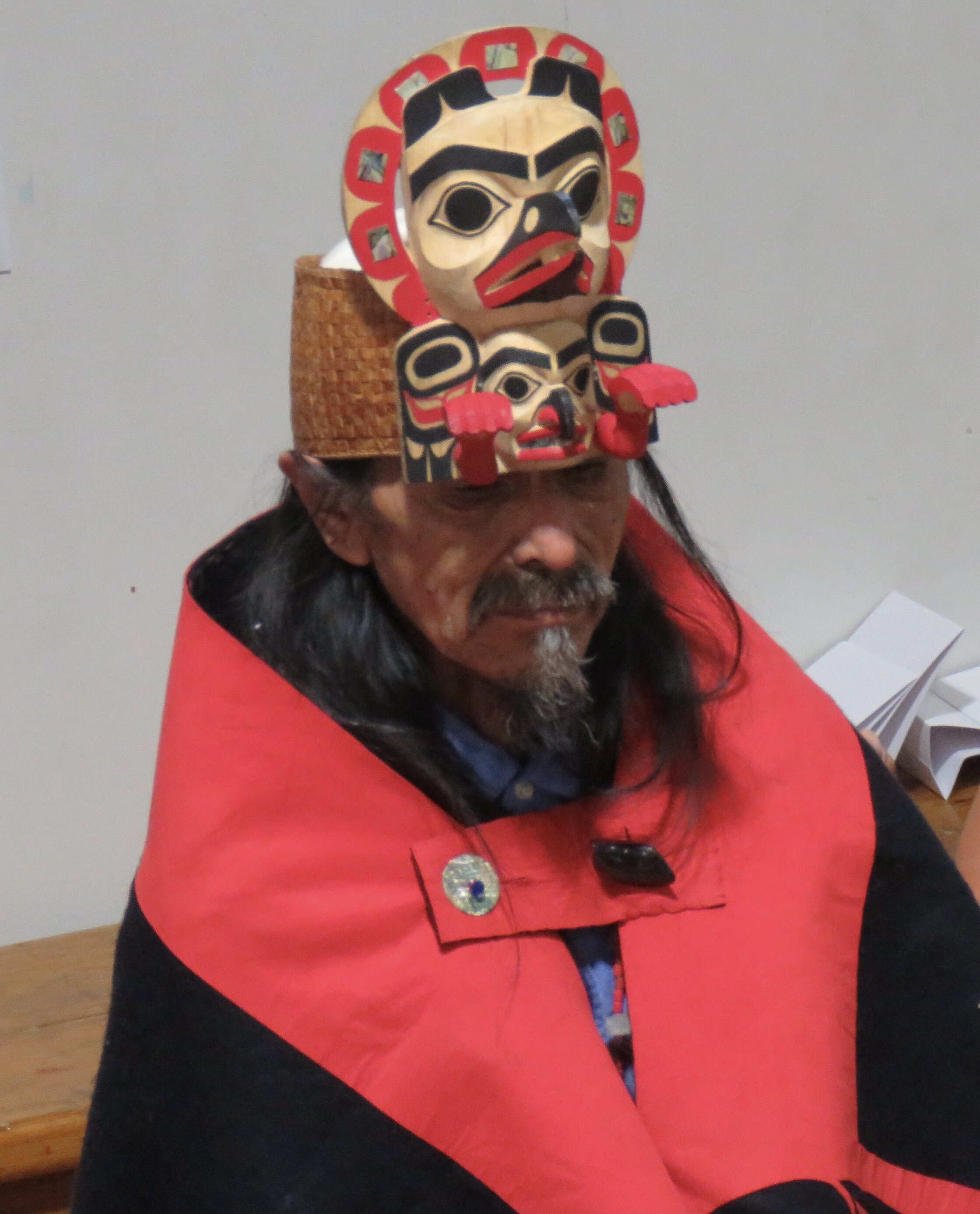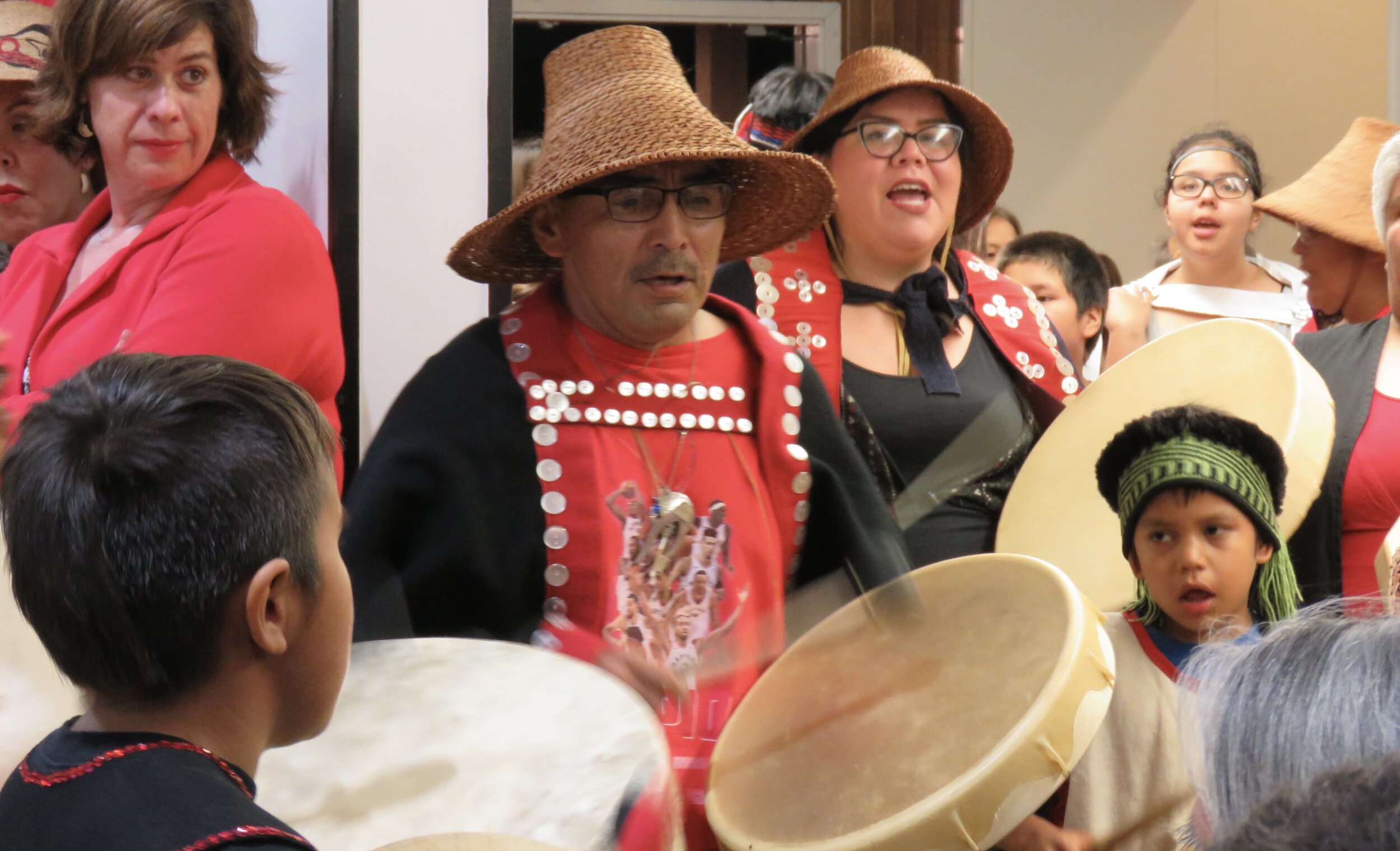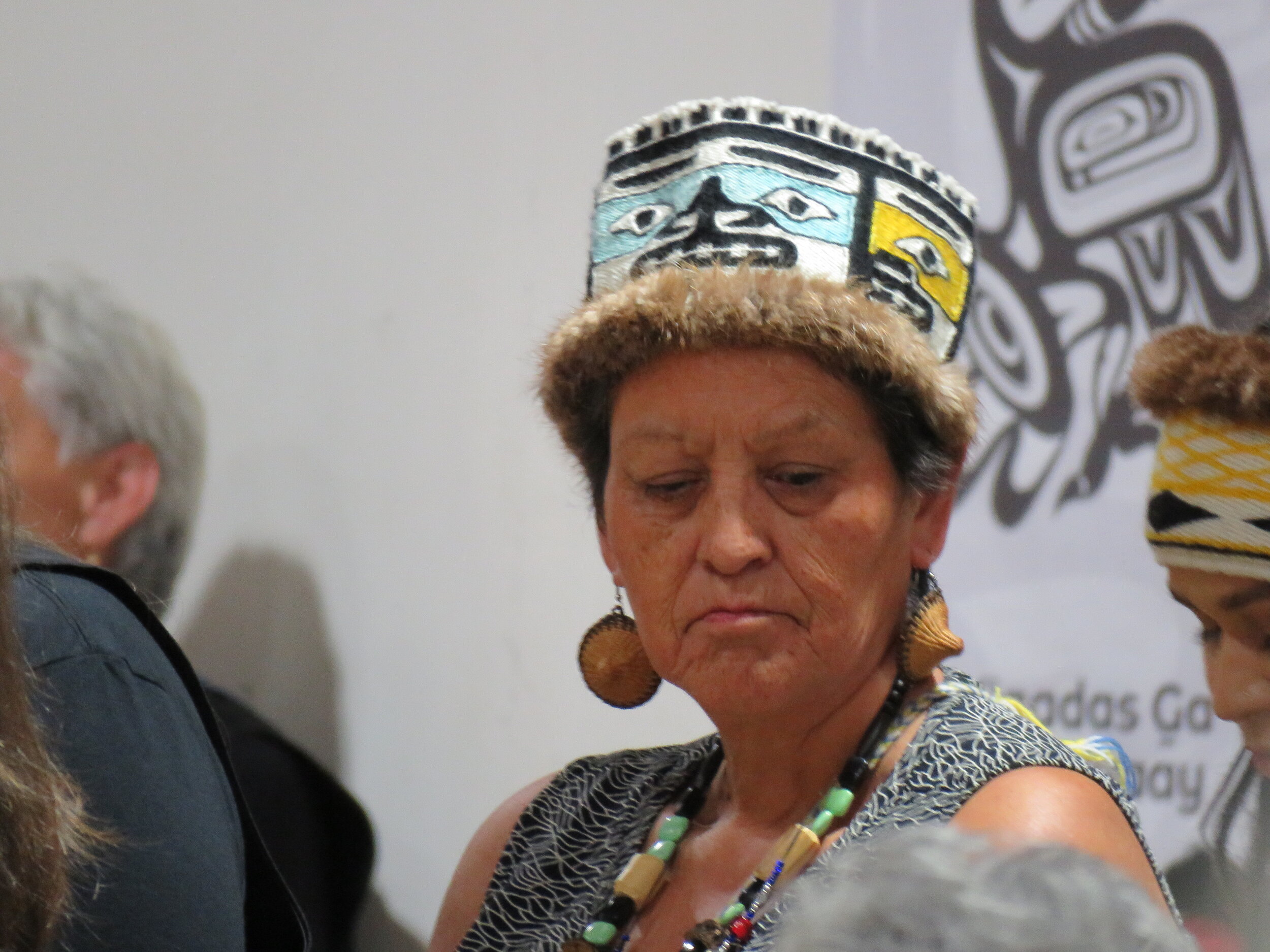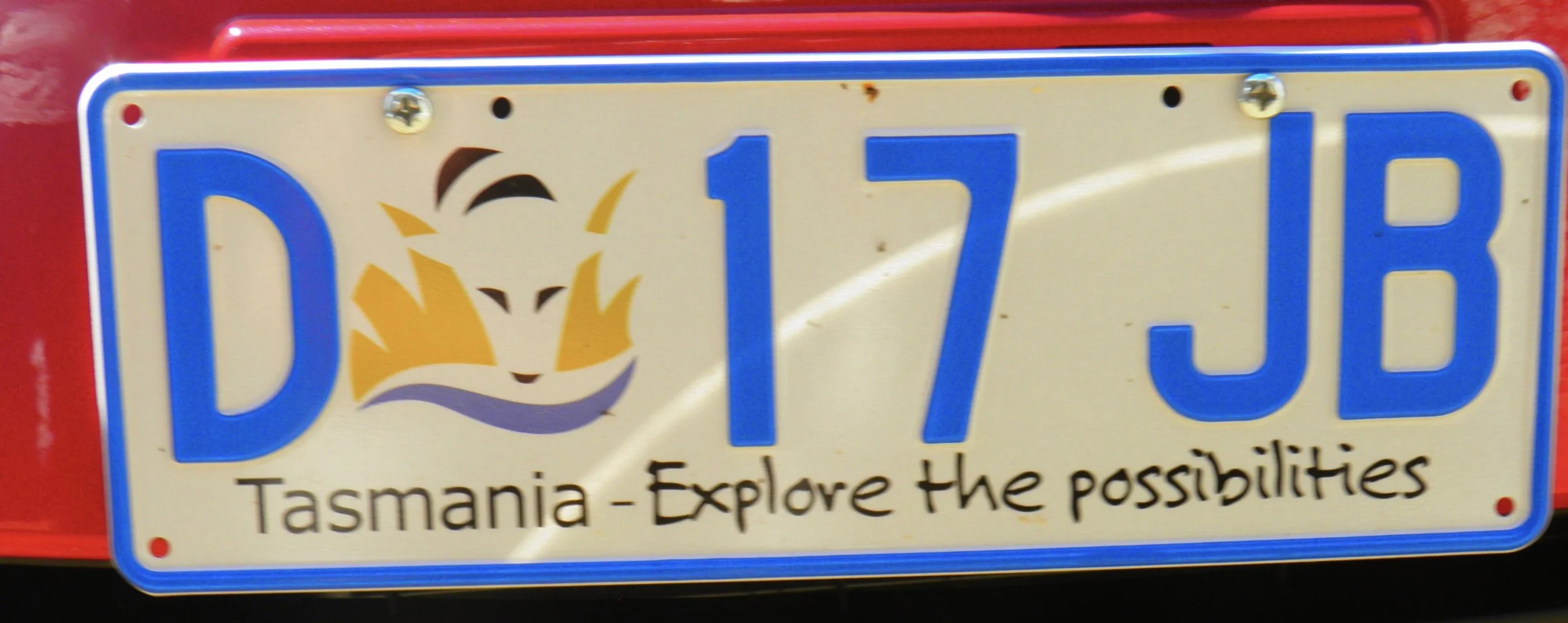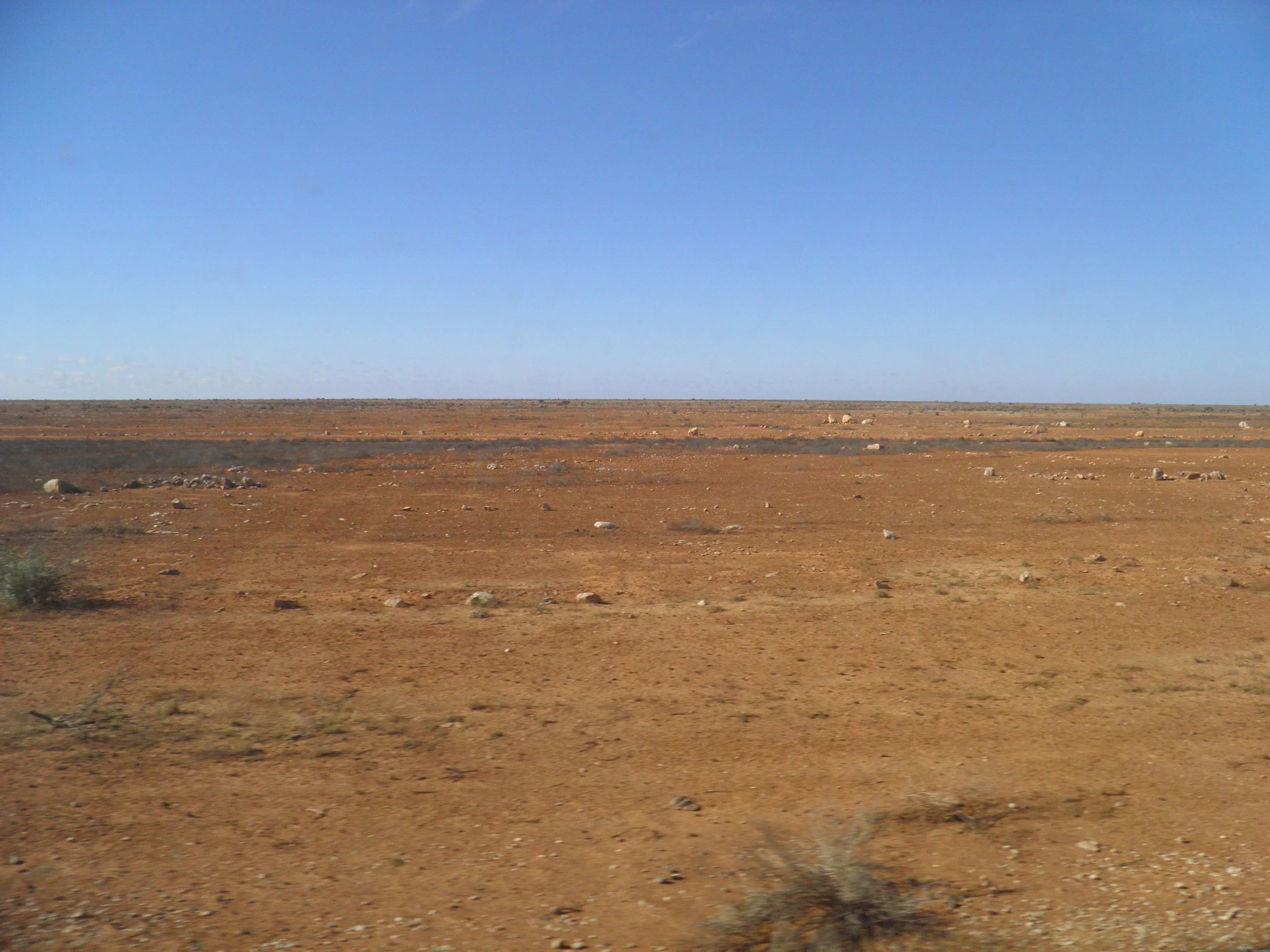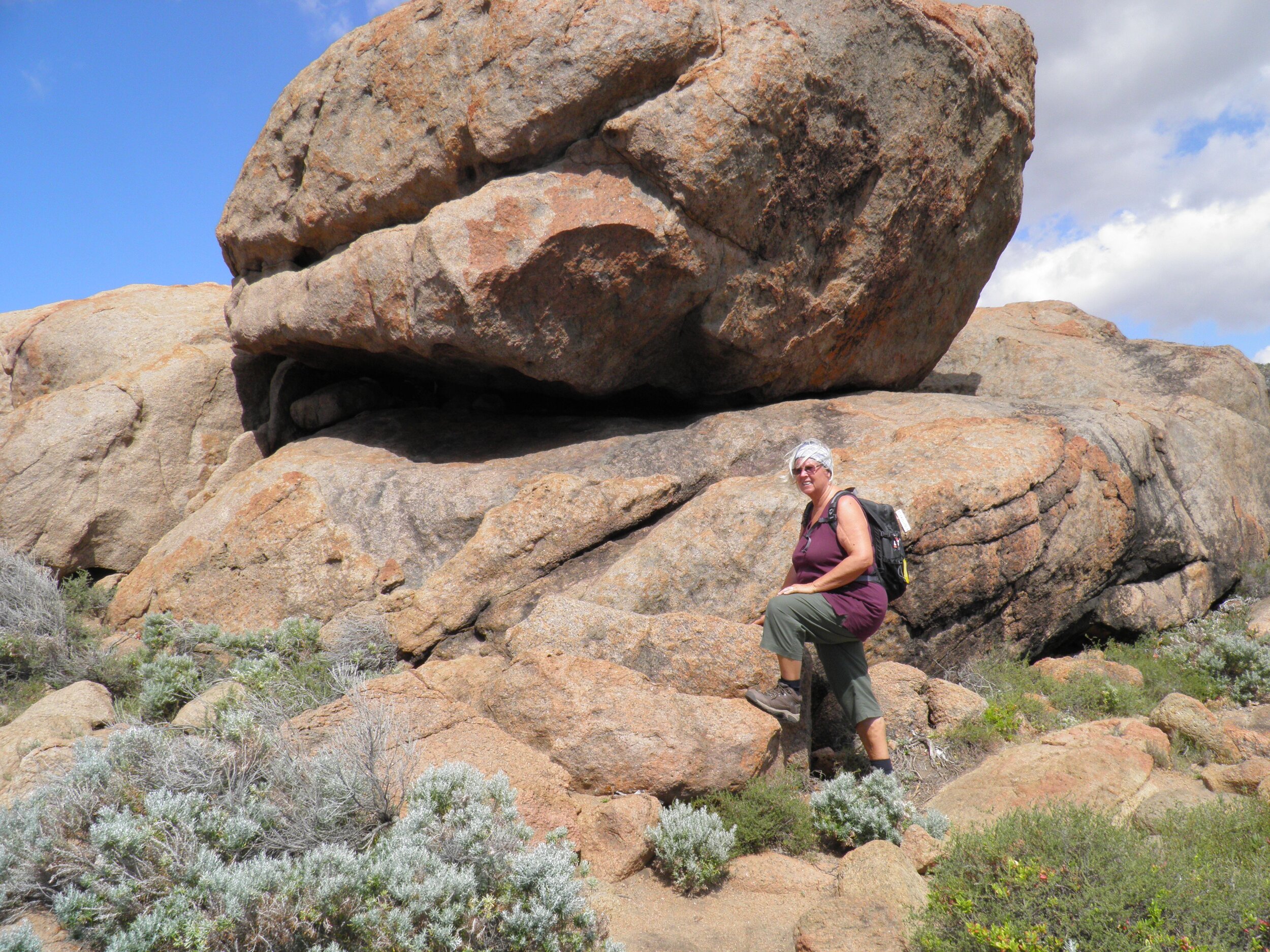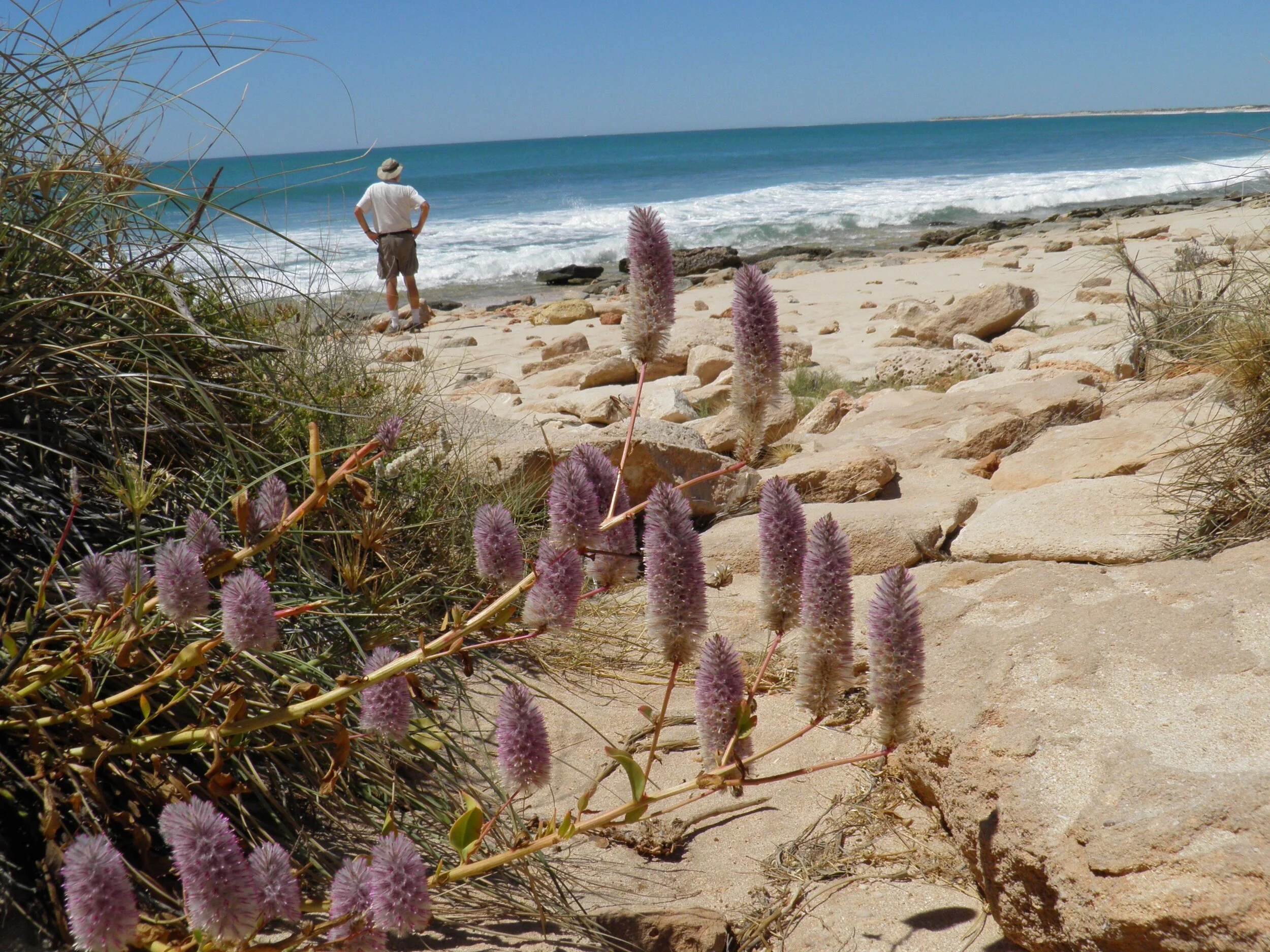If reading printed matter is not a tradition in your culture, how can you address literacy and promote reading among children? Alif Laila runs after school programs, offers girls a chance to learn computer skills, runs Hobby Clubs and is now expanding to include mobile libraries. Ricksaws, busses and even camels bring books to children across Pakistan, children who love to learn about other cultures and much as I loved meeting them.
Enchanting Pakistan
"You are not really going to Pakistan alone? As a woman?" that was the reaction of many when I decided to visit Pakistan. I am writer. And a lovely fellow writer invited me to her country, her home, to be part of her family for a while. We “met” while doing research for a book. She was kind and helpful. And she, too, was a booklover, a teacher. What an opportunity to see a new part of the world.
Mongolia: Into the Gobi With Books
Austria: Where History Lives
Between Lexus and Camels: this is Kazakhstan.
Sauntering and Hiking in Colombia
Potlatch on Haida Gwaii
Potlatch: a party or celebration; among American Indians of the northern Pacific coast, a ceremonial festival at which gifts are bestowed on the guests in a show of wealth that the guests later attempt to surpass.
Having lived in the Yukon I had seen a fair bit of First Nations customs, including button blankets, dances, drumming and celebrations. But once in my life I wanted to experience or, as it is called, to witness a true potlatch.
Thanks to friends in Haida Gwaii, a remote island in northern BC just south of Alaska, I was invited to a potlatch that would celebrate a new chief. The event was held in the village of Skidegate, Haida Gwaii in a hall about the size of a gymnasium.
Along the way I was on a steep learning curve about traditions and about local politics and customs. This was a rare occasion where the sitting chief was ‘dethroned’ by this matriarchal society because the community did not believe that the chief had represented them in the correct ways and may have shown corrupt behaviour in relation to working with Enbridge, an oil company, while the majority of people here do not want a pipe line.
Selecting a new chief had taken several years and painful proceedings. Even now, as the community was ready to celebrate, the family of the ousted chief had the right to be heard first. They spoke at length about the difficult situation and the pain it caused.
As family members finished voicing their concerns, they were respectfully listened to by the entire community, after which they turned their blankets and vests inside out to leave the hall in a way that resembled a funeral.
But then the festivities were ready to start. Some 400 people witnessed this potlatch. We were all seated at long tables laden with pies, plates and cutlery. First the room was cleansed through a smudging ceremony at which smoke was danced through the hall to clear the bad words and feelings.
The new chief, surrounded by close family, made his entrance wearing a regular shirt, jeans and mukluks. Then the women closest to him, perhaps his mother or aunties, took newly designed Haida vest and blanket and held them up for all to see. They dressed him, finishing with the carved wooden headgear framed by ermine skins. The top of the headgear was filled with eagle down. When I searched for the significance of this I found the following explanation:
The Haida Peace and Welcome Dance is a traditional dance performed by hereditary chiefs at a Haida potlatch. The welcoming chief wears a robe or colorful button blanket displaying his family crest. Eagle down held in the crown of the eagle frontlet headdress, which is adorned with trailing ermine fur and inlaid abalone shell, is shaken out to float gracefully in a cloud around the dancer during his performance. The eagle down signifies peace and is considered a gesture of welcome from the Haida to their guests. The guest chief would often perform a similar dance in response. If the dances were held inside the Longhouse, the light from the central fire would reflect and flicker on the inlaid abalone shell in the eagle frontlet headdress.’
And indeed, when the chief was fully dressed, he was given his new name and had to ‘dance in’ his name. In doing so, he bowed his head to all of the visiting hereditary chiefs, scattering eagle down as he danced. These chiefs represented other clans, villages and islands.
Many of the chiefs, all dressed in blankets and headgear specific to their clan, spoke. Many of them addressed the sadness of the fact that a chief had to be ousted but their pleasure with the new chief.
And then they danced. The Eagle Dance was my favourite, with dancers soaring on wide spread ‘wings’ and thrill eagle cries filling the hall to the rafters.
All of this took many hours. In the meanwhile we ate. I am told it takes two years to prepare for a potlatch of this magnitude: fishing, growing vegetables, picking berries, baking breads and pies. There was halibut and smoked salmon, herring roe on seaweed, venison stew, clam cakes, octopus fritters and blueberry pie.
We listened to speeches and watched dancing and drumming for hours, yet the time flew by. I loved seeing all generations come together to celebrate. There were new born babes in arms as their mothers danced, and elders being helped by teenagers.
Seeing the multitude of regalia - blankets, ermine, abalone lined masks, woven cedar bark hats, carved ceremonial sticks - was like watching a display in the museum of anthropology come to life. I found it thrilling to witness since I had read many books about potlatches being forbidden by colonial governments as late as the 1950’s. I am so glad that traditions, language and customs of these regal coast Salish people have survived. And so grateful to my friends on Haida Gwaii for allowing me to witness this spectacular event. Haw’aa, haw’aa, thank you.
PLEASE NOTE: all images are copyrighted.
For books about Haida Gwaii, click here, then scroll to Canada.
Australia 20: The Mona - What Is Art?
The Mona
Tasmania’s number one tourist attraction used to be Port Arthur, the convict colony where ruins of prisons tell the story of its gruesome settlement. Now, Tassie’s prime attraction is a museum built by a man with a lot of money made through gambling, a man who wanted to prove something to the world.
The publicity surrounding the opening of David Walsh's pet project, MONA (Museum of Old ad New Art) has made ripples around the world. The unique characteristics of the location, buildings and exhibits continued to please tens of thousands of visitors every month, making it the most visited single attraction in Tasmania. MONA has encouraged people to visit Hobart, who would ordinarily never have contemplated it. Lonely Planet named it the top attraction.
And so we felt compelled to see it, even though we are not ‘into’ art and certain don’t love contemporary art. The least I can say is ‘MONA is unique and thought provoking’. The overall experience of a visit is interesting. I admired the architecture, the way the building unfolds and embraces the natural landscape is a piece of art in its own right.
As far as the art inside is concerned - well, I did not care for any of it. Weird. Outlandish. Bizarre. After a while I felt like I was on drugs.
Each visitor is given an iPhone with a menu that highlights and complements each piece of ‘art’. You can listen to the artist’s musings, read the ‘idea behind the piece’ or a bio. The iPhone will give details on which ever piece you approach and is interactive. You can even save your tour, email it to yourself and continue reading about each piece when you get home. Cool use of technology.
Art includes a handful of ancient Egyptian artifacts but mostly outlandish modern pieces, like a room full of TV’s blaring different channels. I’m sure there’s some socio-economic level of interest to it, but it’s kind of lost on me. There was an entire office with only blank white paper displayed…
A wall full of bees: each one suspended from a thread on the ceiling, creating a 3D piece. Provocative paintings. A video of people crossing a street. A room simulating the inside of a computer. Two brooms on a wall. OK.
A few humorous touches kept us on edge. The museum owner’s parking spot is identified as ‘God’s parking spot’. He must have a sense of humor. I hope. But mostly he must have a lot of money. Personally, I think there are better ways to put that money to use than to spend it on a trampoline with buddhist bells underneath or a blank library, a room entirely filled with blank white books.
Do I think it’s worth a visit? I’m not sure. In a way it was a waste of time and money. On the other hand, it got me thinking. What is art?
And perhaps that was the only motivation that drove David Walsh to build MONA...
“As a boy I had limited access to the great repositories
of artefact but I, like most of us, held a library card.
A real treasure. If a museum is a cultural gemstone
then a book is cultural Lego.”
-David Walsh
And then our three months down-under were over. We finished off with a grand finale: the Seekers’ farewell concert in Hobart. So long, Australia, we’ll be back some time.
Australia 19: Into Tasmania
Tasmania. It always was such an intriguing name... I learned about it in school. Named for the Dutch explorer and sailor Abel Tasman, this island always conjured up images of steep, dark jungle for me. After completing our three months long amazing-race-Australia we flew to Hobart, Tasmania for our final week in Australia.
Australia 18: Across The Nullabor
When we planned our Great Australian Adventure, we had many choices to make. How to travel, what to see. We decided that a camper was the most economical way, and it would give us relative freedom to go when and where we wanted. We knew we wanted to hike a bit somewhere and chose the southern cape area to do so once we dropped off the camper…
Australia 17: Walking the West Coast
C2C trail
Kees is the die-hard long distance hiker of the two of us. He continued with the Coast to Coast trail after I took a break. He stumbled in after an even tougher day on the trail than the first two. He really pushed himself to the limit but did another 22 KM. The sport college he attended in his younger days, made him quite competitive…
We stayed in a lovely condo on Prevelly Beach, it even had a washer and dryer so we managed to do our laundry. That night we had a fantastic dinner in the resort: steamed vegetables, perfect steak, roast potatoes. Dinner never tasted so good. I realize that we have not had the best “input” to get the right “output”. You are what you eat and, in Augusta, the motel provided us with some white bread, juice and jam. When we arrive there, at the end of a long hard day, everything in town had just closed. The first night we found greasy fried chicken and fries at a gas station store. The second night, a small cafe stayed open ‘late’ to make us a hamburger. Not great food to hike on. After our steak and veggies dinner I could really feel the energy coming back.
It is hard to imagine the utter isolation of this trail if you are used to European or North American hiking. Here, there is NOTHING besides nature. Once you hit the trail, you are on your own. We might see one or two people in an entire day. No villages, no cafes, not one place to sit and have a drink. There is not even a bench. When we need a break, all we can do is plop down on the track in the dirt. No tree trunk, just track and scrub. Generally there is no shade to sit in. We carry daypacks with lots and lots of water.
Gilgarra Retreat
Sometimes the track is so narrow that we scrape our legs and arms on the scrub. I try to stamp my feet in the hope that the snakes will feel us coming and disappear. It is a bit daunting to know that you are completely on your own. There is no way out other than forward. There is, mostly, no phone reception. No place to walk to in an emergency. All I do is hope that we don’t need help for there is none. Just wild bush country and us.
Day 4 saw us hike from Prevelly to Gilbarra homestead. We made it but with no energy to spare so we are both skipping day 5.
The homestead is a gorgeous acreage with a large house and outbuilding. Overhanging verandahs, roses, a pond. Our hosts made us a Thai dinner and we slept like a log. Feeling better now but glad to have a day of rest.
The next day we continue in our quest to reach Cape Naturaliste, after a beautiful breakfast of muesli, fresh fruit salad and homemade bread. It’s a treat to get breakfast like that. Usually we are the ones serving it in our own B & B. Gilgarra Retreat has its own grapefruit, lemon and orange trees. It rained a little bit last night, but this morning the sky is brilliant blue. We almost wish for clouds when hiking because the sun gets just too hot.
We hike some 17 kilometers. The trail starts out as not too bad, although some sections were so narrow that we were scraping arms and legs on the bushes. Then we hit some steep boulder sections with no visible trail, just rocks to clamber down on along sheer cliffs with the ocean below. Gorgeous views but very treacherous clambering, and not exactly hiking.
The trail.
The highlight for today came when we actually found a bench! In the shade of a melaluca grove no less. We were just unwrapping a sandwich when, right in front of us and very close by, a huge whale breached! He came down with a thunderous roar. We watched whales on and off all day. Later on, several breached again but not so close. It was an awe inspiring moment.
With sore toes and stiff limbs we are now in a lovely old hotel. Tomorrow will be our last day on this trail and we plan on touching the corner stone of Cape Naturaliste lighthouse.
...all our roads are new and strange,
And through our blood there runs
The vagabonding love of change
That drove us westward of the range
And westward of the suns.
(From The Old Australian Ways)
We both had enough. The organization of the hike we booked was perfect. The accommodations and meals were mostly perfect. The fact that our luggage was transported was wonderful. The route descriptions and everything else, were great.
The problem is the trail itself. It seems that the entire idea of a Cape to Cape hike is fairly new and still in its infancy. They’ve managed to connect a path all the way. But the trail is still very rudimentary. In a few places it is a nice hiking path, but most of it is too rough to even be called a trail. The sections of soft beach sand and crumbling dunes to climb really did us in. The scrambling over rocks, tripping over branches and boulders, just made it plain unpleasant.
Combined with relentless sun, we are zapped of energy.
Today our luggage was to be moved to a 5 star resort. We looked at each other and said “Let’s go with the luggage!” It seemed a shame to have a room in a luxury resort and not be there to enjoy it. This is why we are now in the most gorgeous bungalow, in a quiet tropical forest. Five minutes from a glorious white sand beach with turquoise waters. Best of all: a heated infinity pool. Imagine just coming here to sleep. That would be such a waste, wouldn’t it?
We decided that it really doesn’t matter that we didn’t finish the last section to the lighthouse. We had a good time, enjoyed the views, the whales, the beaches and the experience. But we recognize our limitations.
Tonight we’ll enjoy a fancy dinner. Tomorrow we’ll catch the bus back to Perth. And then, the next exciting chapter of our Aussie adventure: the Indian Pacific train across the Nullabor desert, to Adelaide and then on to Melbourne. Stay tuned for that!
C2C
For books about Australia, click here: https://www.globetrottingbooklovers.com/books
Australia 16: Cape To Cape Hike
Cape To Cape Trail
Once we approached Perth, the time had come to move out of our camper. We cleaned and packed before driving to the rental office in the city and dropping off the unit that has been our home for two months. Then we checked into The Witch’s Hat, a backpackers hostel.
I love Australia’s place names!
Our backpacks are stuffed and very heavy. Part of the problem is that we keep finding wonderful books. We bought an iPad specifically so that we could have lots of books without the weight. The problem is not so much that we don’t like reading on the iPad, it’s that we don’t come across good books online. We find them in campgrounds, in second hand book stores, on shelves in the youth hostel, etc. So they pile up.
But now it’s down to just us and our backpacks. We are embarking on a long-distance hike along the south west coast.
Leaving the hostel in Perth, we drag our luggage to the central train and bus station to catch a bus to Augusta, the southern most tip of Australia’s mainland. he bus ride takes 5 hours of driving like a bat out of hell, down narrow winding roads. I never get car sick but I did this time...
Kangaroo Paw flower
It was a short five minute haul in Augusta to our motel. We have a nice, self contained room with a kitchenette. Augusta is very blustery - a storm is howling through town right now. Getting here was a total climate change from the 30+ weather we had been having. It was 19 when we arrived.
Now we are starting our next adventure: hiking the Cape to Cape Walk, 135 km from Cape Leeuwin to Cape Naturaliste!
Check out: http://www.capetocapetrack.com.au
We booked the hike through a special agency. This way we did not have to do any of the research and accomodation bookings, figure out where to eat etc. They book everything, sent us a big book of the trail, step by step, with hotel information, dinners booked, and our luggage transported to the next place.
We are in Augusta for 3 nights so we can wash clothes, and make our own lunches here.
We started off at the Cape Leeuwin Lighthouse, by touching the corner stone. As the plaque states, the Dutch ship Leeuwin (Lioness) reached the southern most point of Australia in 1622 and the land was mapped as ‘land of the Lioness’. Having been born and raised in The Netherlands, it’s fun to see all of the Dutch connections here.
The trail today was not easy. 25 km of bushwacking, clambering over boulders, trying not to step into deep blowholes, plowing through kilometer after kilometer of soft, sloped sand on the beach. Once in a while there was a nice section which made for easier hiking. But the Pieterspad long-distance hike in The Netherlands was a piece of cake compared to this. The scenery is glorious, but a strong wind (thank goodness it was in our back) whipped up sand that pelted us.
Day 2 was more glorious scenery, great weather (hot sun and no shade anywhere!) but also more very strenuous hiking. Whenever there’s a real path in the woods, it is wonderful. But much of the time it’s heavy slogging along the beach in very soft sand that gives way with every step. Sometimes like quicksand, it pulls you down with every step. Try that for 2 hours... And then it was up the headlands, climbing quickly.
I decided that I was not enjoying this and so I am skipping Day 3. I don’t have anything to proof. by doing this hike. The option of spending the day in a resort on a glorious beach, with a pool and wifi, was just too tempting. Kees, however, is bravely trudging along. He loves the challenge.
The wildlife we see here includes kookaburras, a very large kangaroo on the trail and two very large (1.5 meters long) black snakes!
Australia 15: Pinnacles & New Norcia
At home we have a book about Australia that shows ‘the pinnacles’ on the cover: Australia, Beyond The Dreamtime (https://www.globetrottingbooklovers.com/books)A nice change from always seeing Uluru on anything Australian and these pinnacles are every bit as unique. I often wonder what it would be like to be the first to come across a place like this. Normal scrubby desert and then, bang - bright yellow sand with thousands of stone pillars.
We drove to Nambung National Park to see the Pinnacles. Scientists are not sure if they are stone (shell and sand) structures around which the soil has eroded. Or if they are fossilized wood. I would have thought it’d be easy to determine that, but apparently not. But, whatever it is, it looks cool to be surrounded by these pillars. We walked almost 4 KM among them, in the heat.
In 1846 a Spanish monk made his way to the new world after having been given the task by the pope of establishing a monastery in Western Australia and converting Aborigines to Christianity.
Dom Salvado had a somewhat unique view for his time. He did not try to convert and preach very hard but worked with the native population to win their trust. He appreciated the wisdom of the native population and made friends with them. Salvado eventually founded a small town in the Australian bush. New Norcia is a Benedictine monastic town. Separated from the Catholic church, these monks live in the town permanently and actively work to earn their own living. They grow and press olives, have a beautiful bakery and make a renowned wine and beer. It’s like a small Spanish town in the Australian bush country, with old mission buildings and palm trees.
We took a tour of the churches and several other buildings now used by educational institutions for retreats, etc. You can even spend the night in the monastery. If we weren’t running out of time, we would have stayed and experienced that. A night’s stay includes a small room, and three meals a day with the monks, time for meditation and prayer and just quiet time to relax and reflect. Salvado made several trips back to Europe to raise funds for the small village. By 1900 on his 8th trip he passed away in Rome and was eventually buried in New Norcia.
We had the opportunity to stay with new Australian friends nearby. It was lovely to meet Aussies. They always seem so laid back and cheerful. They have a very admirable tight-knit community and take pride in building their own facilities like tennis courts, playing fields, a recreation hall and library.
We stopped at Yanchep National Park and, finally, saw koalas! They are so cute, clinging to the tree in their sleepy positions. They look as if they will crash to the ground at any moment.. They’d move to a more comfortable fork in a tree, once in a while.
Australia 14: Monkey Mia
Driving south along Australia’s northern west coast, we continue another 100 KM to the tiny village of Denham. A motel, a marina, a supermarket, a gas station and then a lovely caravan park. The showers here are salt water... so how do you rinse off after an ocean swim? We felt lucky to get a spot overlooking the ocean from a bluff. But we soon discovered WHY they still had an ocean front site available! The wind howls through here at 50 knots an hour... Can’t step outside without being blown out of your pants. I don’t need a hair dryer - just step outside and it’s blown dry in a minute. We are blown away (literally) by the strong storm winds along the west coast. At first we thought it was just a windy day. And a stormy night. But it got worse and people said “Oh, the whole west coast is like this.” We can’t sit outside. Our chairs are blown away all the time. It’s tough to hike in this wind and the flies seem to have developed special techniques because they are NOT blown away by it.
The first recorded arrival of white men on Australian soil, was right here. A Dutch man. A Dutch trading ship, under the command of Captain Dirk Hartog arrived here on October 25, 1616 - more than 150 years before Captain Cook. Hartog left a pewter plate, nailed to a post. The original plate is now back in the Rijksmuseum in Amsterdam, but there’s a replica of it here. Seems like every town here has a memorial, some statute or memento about a historic Dutch ship that hit the coast and perished here, three or four hundred years ago. There’s a whole slew: the Batavia, the Zuytdorp, and more. One plague said, and I quote “It is not clear why the ship perished. Perhaps the captain miscalculate the turn toward Batavia in the Indies.” And I am thinking ‘No way! Those Dutch sailors were the best in the world at that time. They made it all the way around the world. It was the darn storms off this coast that blew them onto the rocks!”
Today we drove the short 25 KM to Monkey Mia. I had talked to many people who had visited this resort where wild dolphins come to interact with people. Everyone said that it used to be really fun, but that now it is very touristy and regulated. But still. When wild dolphins come to the shore, I wanted to experience that. I did not have high expectations. I also suspected it to be commercialized.
BUT it was fun! It’s done in a lovely manner. You do have to pay $8.50 a person entrance fee, but that is often the case at wildlife or nature reserves. The rangers gave a informative talk and the bottlenose dolphins arrived around 8 AM. No one makes them show up, they truly do live free in the ocean. Of course they have been conditioned, they know that there is a treat waiting by the shore. But I do believe the regulations are in the dolphins best interest. If they did not strictly enforce rules, people would feed them bread, or worse. They would touch them and affect them with sunscreen or bacteria.
Now, we all had a long, good look at the six wild dolphins that came to shore. They almost beached themselves and showed off. One mother brought a small calf. It was lovely. A few people were allowed to feed a fish to them and then it was over. The dolphins come back as they please but are only fed in the morning, and only up to five females, bringing males and other friends along.
As we continue south to Geraldton we drive passed Pink Lake. The water is pink because of a microbe releasing beta carotine in the water.
The aptly named Pink Lake
Geraldton is really the first city since leaving Darwin, several thousand kilometers ago. It’s very nicely laid out, with large boulevards and a great waterfront. We’ve noticed in a lot of towns here that the waterfront is preserved as park, often with playgrounds and public beaches. It’s so much nicer than walking along hotels and private properties and not being able to get to the shore. The library has good, free!, internet access so we got caught up on emails and work.
Geraldton
Australia 13: Coral Bay and Stromatolites
We are headed south along Australia’s northern west coast. This is perhaps one of the most picturesque beaches of white sand, with aqua water and perfect swimming and snorkelling anywhere in the world.
But the campgrounds aren’t as great. We found a spot in the “beach front” rows of the campground closest to the beach. It really was just a walk past other campers and across the road. But it felt like we were camping in a parking lot, with cars coming and going, a petrol station right next to us. Busy, busy. $48 per night just to camp here. So we’re not staying as long as we would have liked to.
But the snorkelling is out of this world. Right off the beach you immediately float over amazing corral in all shapes and sizes, with multi-colored fish darting everywhere.. Large rainbow colored fishes, trailed by little blue, yellow, black & white fishes. Even the occasional turtle. Fabulous.
This morning we walked along the beach to an area of the reef where reef sharks have their nursery. The shallow waters were teaming with reef sharks in all sizes as well as a small ray.
Then we tore ourselves away from the tranquil coast and drove 430 KM down the same, boring desert road. It’s called the North West Coastal Highway. It’s not truly boring - there’s something imposing in its emptiness - but there really is nothing to see. Kees loves driving the long distances and I’m getting the tedious sleeves knit on the sweater I’m making.
The same red earth (Uluru’s color really is not that special when you consider that the whole continent is red soil. It’s just that Uluru is so hard, a monolith that has not eroded).
The same dusty green shrubs.
The same dead animals along the road. Not so many wallabees as there were along the Barkly Highway, but kangaroos, birds, cattle, even sheep. The cows are huge Brahmin cows and, apparently, get hit by road trains regularly. They lie on the side of the road with their stiff legs in the air, bloated and dried like gigantic leather purses.
Coral used to be used as building material here…
We even see the same people. Similar to the Camino de Santiago, a long distance hiking trail in Spain where you often run into the same hikers each day, here you also meet fellow travellers going in the same direction. We recognize people we saw two, three even five days back in another town. Obviously making the same stops along the same route.
We pass one town of a decent size and do our groceries for the next few days. Fill up with diesel whenever we find a larger town with lower prices. Then we find the turn-off to Denham, Shark Bay and - my long awaited stop - Monkey Mia.
I just finished reading Bill Bryson’s In A Sunburned Country, in which he elaborates about Hamelin Pool and stromatolites. From his book, I knew about these rocks containing the earth’ first microbes. If they had not existed, billions of years ago, and decided to release oxygen into the atmosphere, we might have never ‘happened’. So I was curious to see to what I owe this life on earth. Turns out stromatolites do not look exciting. The closest I can think of is lava. Black, greyish rocks sitting knee deep in saline water. No mysterious glow. No fluorescent frills. Not even gory green algae. Just rocks in clear water. But still. Cool to know that this is one of only two places on earth where stromatolites still ‘live’.
Stromatolites, the origin of life on earth.
Australia 12: Can You Say This Fast?!
My favourite photo of Australia: land, water, sky.
Australia has the best place names ever.
I always liked the Alaskan town called Tok. But Australia has one better: Bukbukluk!
Did you know that the town in Alaska called Chicken, was originally called Ptargiman. But no one knew how to spell it so they changed it to Chicken.
Australia has the following gems:
How would you like to live in Humpty Doo?
You heard of Kakado but how about Jimbalakudunj?
Then there is Tom Price,
Monkey Mia and
Wurrumenbumanja.
There’s a town called Wishbone and a place called Useless Loop.
Wouldn’t you love to see a place called The Bungle Bungles? It’s a area of unusual rock formations.
If you had enough pieces, and if you were allowed geographical names in Scrabble, wouldn’t you love to spell Koombooloomba?
Goondiwindi and Toowoomba are not far from each other.
The longest place name is a hill in the south called Mamungkukumpurangkuntjunya! Say that one fast.
Many names here are, of course, British. There is Wales, Victoria, and so on.
But there’s also a bit of Dutch history, especially on the west coast where Dutch sailors either came ashore on purpose or by accident. We are near a town called Zuytdorp. There’s also Dirck Hertog’s Island. and Arnhemland. Today we visited Vlamingh Lighthouse. And of course Tasmania was named for the Dutch explorer Abel Tasman.
We saw a great t-shirt. It had a sign post pointing to: DIDYABRINGYURGROGALONG. Have to say it out loud to get it...
For now, we are on our way to the Ningaloo Reef. I can’t wait to see it, no matter how it is spelled.
Exmouth, Western Australia is a pretty isolated town. I felt that we had left the Outback, being on the coast, but people here still calls this the Outback. Exmouth feels like a small, laid-back beach town which might become really popular in a few years. It has a small centre with dive shops, a bakery, a grocery store. I have been to towns that boasted being famous for their wine, their cheese, having a giant lobster, or something like that. Exmouth holds the record for strongest mainland wind gust, measuring 267 kph! While we are here, it’s been trying to break that record. Very windy but that’s actually nice when it’s so hot.
But Exmouth is also very different from what we expected. I imagined the west coast to have green hills, perhaps because I’m a North American west coaster. Here the west coast, at least so far, is simply desert. Red rocks, shrub, even termite mounds right up to the ocean. There literally is only a row of sand dunes in between desert and reef.
Camping in Ningaloo Reef National Park
Oh, that reef. I’ll let you in on a secret...
We’ve all heard of the Great Barrier Reef. The west coast, has a similar reef. A bit smaller but still some 300 KM long... and this one is RIGHT off the main land. You don’t need to take an expensive cruise to reach it. You don’t need to go way out at 50 knots an hour... You simply put on your mask and snorkel, wade out into the turquoise water and voila.... coral bommies all around: red fish, blue fish, yellow fish too. It’s awesome.
We camped in town first where a huge emu visited us. Then we found THE best spot in the entire Nigaloo Reef National Park - right off the beach with a view of the water and sand. The draw back is that national park campgrounds have no facilities. So we went unplugged and love it.
We enjoyed a glass of wine with fellow campers, listened to stories of kite surfing and sailing on the blue corral lagoon. Kangaroos lazed around us in the shade. Then we made dinner and watched the sun set.
Now, we’ve been telling you all about how wonderful our Australian travels are: warm temperatures, swimming, tropical beaches... So we figure it’s time to tell you about the other side of traveling. How it’s not at all what it’s cracked up to be. If you have to stay home, this may make you feel better:
:-( The distances we have to drive here to get anywhere are terrible... One day we did 930 KM.
:-(The temperatures can be murder. It’s been an average of 33 degree, sometimes up to 41 degrees C.
:-( The flies are awful... they insist on settling permanently up your nose.
:-( You always have to walk to a shower building, dragging all of your clothes, towel, toiletries, the key... Then you have to balance on one foot in a wet showerstall, trying to get dressed.
:-( The flies are terrible.
:-( There’s no Heineken to be found in the Outback! Talk about hardship…
:-( It’s hard to find good coffee here, especially in the supermarket. Almost only instant.
: -( You should see the flies here.
:-( We keep hearing about killer jellyfish, crocs, spiders, snakes.. That sort of stuff starts to take a toll on the mind. And don’t ever forget to lift up a toilet seat before sitting on it. You do have to check for tiny but deadly spiders…
:-( We have a sunburn. And sand in unmentionable places.
:-( There’s just two of us. If you want a new conversation it gets limited sometimes.
:-( When we run out of a book to read, all we can do is hope to find a book exchange in the next campground. New paperbacks are $20.- here.
:-( Our stove has 3 burners but you can only fit two small pans on it at once.
:-( Did I mention the flies?
:-( Our fridge is about a quarter of a normal one. And it’s full of beer. “Baby beer,” Kees says, referring to the alcohol content of 2.5%.
:-( Almost no internet, and if we can get it it’s expensive.
:-( You should see the flies. They like beer.
:-( Our bathroom is about half the size of a small broom closet. Try pulling up your pants in that.
:-( We see more roadkill than houses.
There. I hope this makes you feel better.
Now I have to run. To the gorgeous white sand beach with the blue water and palm trees. Sorry.
Australia 11: Heading West & Meeting The Cucumber Police.
Baobab in the Outback
We are heading west across the continent of Australia. Australia is paranoid about anyone bringing in invasive species: animals, flowers, trees... anything non-native (except people). And understandably so. In the past anything that was brought in, flourished and took off with a vengeance. Cats. Rabbits. Blackberries. They’re all out to conquer a world of native plants and animals. I was utterly amazed when, upon landing at Sydney Airport, we were told to remain seated with our seat belts securely fastened. Then the flight attendants opened all overhead compartments and proceeded to spray the entire inside of the plane with pesticide. My mouth had dropped open in disbelief but I quickly closed it and actually huddled under my scarf and tried not to breathe. The smell reminded me of the long banned Flit sprays my parents used in mosquito season. I come from Salt Spring Island where, if you so much as whisper the words “Round Up” people gasp and stare at you. I wanted to ask what I was being sprayed with but did not get a chance.
Having now been in Australia for a while, I am slightly more sympathetic. Think of it the other way. What if we, inadvertently, brought back Australian flies? Heaven help us. The buggers could easily come aboard airplanes inside our nostrils or riding inside our ears. Whereas Canadian flies are polite, almost apologetic if they land on your arm, Australians flies insist on a close personal relationship. They like your mouth. The closer the better. Your eyeballs are fine too. So if there is a chance of importing Australian flies to other parts of the world, perhaps we should spray all airplanes...
Kookaburra
Last night we crossed the border between Northern Territories and Western Australia. And there we met the Cucumber Police! They have a real border station and uniformed guards who are out to get your veggies. I’m not sure what exactly they are looking for, but they seem to live in fear of your potatoes. I surrendered two wrinkled oranges and some limp lettuce. But that wasn’t enough. The guard boarded our camper and proceeded to go through all cupboards. Two blushing tomatoes were caught in the act and arrested. An innocent zucchini was hauled off as a common criminal. A cold, baked potato was handcuffed and contained. Even the banana peels from the garbage got a life sentence.
Those guards do a good job protecting their state, I’m sure. But I’d hate to spend my life confiscating carrots.
Come to think of it, perhaps they should train all those rabbits that were introduced to the continent. I’m sure they’d sniff out every last carrot from every passing camper van.
We finally crossed the entire continent and arrived in Broome, WA. I had read about a touristy, crowded town but on Saturday afternoon most things were closed and the streets were half empty. Strolled through a tiny Chinatown at 37º. Finally found something I wasn’t able to buy anywhere in the Outback: knitting needles. I had made due with a pair of chopsticks but now I can make more proper sleeves for the sweater I’m knitting. Campground is very close to the white sands of Cable Beach, supposedly one of the top 5 best beaches in the world.
“Can I swim here?” I ask in the campground office. “Sure,” says the lady at the counter. “Is it safe?” I want to make sure because I’m starting to learn that these Aussies are sometimes just too laid back.
“Sure,” she repeats.. Then adds, “Just the odd hammerhead shark and a croc last week.”
I decide not to swim.
Aussies are such wonderful, lacksadaisy characters! Most men in the Outback are rugged cowboys. Stopping at a roadhouse, hundreds of miles from anywhere, you see families buying an ice cream, roadtrain drivers going for a meal and everyone else just getting petrol. One guy get out of his car. Must have been 65, 70 years old. Standard bush clothing: rugged hiking boots with wool socks. Sleeveless vest showing heavy biceps. Suntanned face in the shade of a leather cowboy hat (called a bush hat). This one had a long thin, white ponytail and instead of the standard dusty shorts he was wearing a long purple sari wrapped around his waist.
On our second day in Broome we got up at 5 AM for a long, 8 KM, walk on the beach before it got too hot.
Spent the rest of the day doing laundry and cleaning the camper. Beat lots of red dust from the pillows and even mopped the floor.
But soon it’s time to continue our drive south. Kind of a bummer - no sooner have you made it to the gorgeous beaches of the coast or you need to go back into the desert. More than 500 KM from Broome to the next town. Same long straight roads through shrub and red earth. Even knowing that the coast is about 15 KM on your right, doesn’t help much if you can’t see it. The distances here are amazing. It kind of reminds me of Nunavut, Canada’s Arctic region. If those remote, isolated villages had roads connecting them, it would be similar to here. Hundreds of kms to the next town. And it’s easy to miss the one roadhouse in between where you can get gas. Often it literally is one building. But some places on the map turn out to be one shed with the name spray painted on it. Have even seen several places that show on the map and are one big truck tire on the side of the road with the name spray painted on it. Perhaps there’s a cattle station somewhere off in the bush. But you can’t see it from the road.
We follow the bright red track into the bush. It leads to brilliant blue sky and a pure white beach: Eighty Mile Beach. They sure could use more surveyors in Australia. Not once have the distances on the maps and on the signs and on our odometer been the same.
Eighty Mile Beach. Life doesn’t get much better than this. White sand and an amazing array of shells. Turquoise waters. Little white waves to play in. Not really swim because of sharks, but still nice. We took a long walk, searched for and found gorgeous sea shells. Watched the sun set with a glass of wine in the sand.
West coast sunset
Australia 10: Kakadu
Kakadu National Park is one of Australia’s best known parks. But it’s another several hundred kilometers, hot, muggy.. what to do? Is Kakado worth the extra miles?
After having seen it, we both agree: yes. If you have come from so far, you might as well go the extra miles and see it. We were disappointed with the landscape. It’s just more of the same desert: shrub, flat and long distances. There are more palm trees in the mix and it’s a bit greener, but also hotter and more humid. Wouldn’t want to be here much later in the year.
Much of what is described in the tourist books and brochures is only accessible if you have a 4WD or some rough car that allows you to go down bumpy dirt roads. Rental campers are not allowed on dirt roads. However, there are a few short, paved side roads that allow you a glimpse into Kakadu. Two excellent visitor centres explain both the aboriginal way of life, local legends and ceremonies as well as the natural history of the park.
We stopped at a few view points but the highlight was two extensive sites of aboriginal art. As far back as 20,000 years (!) people have come to these very spots. They roamed and hunted on the plains and in the estuaries of the rivers leading to the Timor Sea (Van Diemen Gulf).
In Kakadu they had rock shelters, allowing them to spend the rainy season here. And what do you do on a blustery, rainy evening when it’s dark early and you have nothing else to do? You tell stories with your children and extended family around. And while some recalled events, and others explained legends, and the talk drifted to the hunt and the food they enjoyed - some of the gathered clan illustrated these stories.
Cave art
They did so with stones and the ground colors that were in abundant supply. They painted them on walls and ceilings... Little did they know that, thousands of years later, we would file by and take photos of their art. Thanks to aboriginal interpretations, we are able to follow their stories - such as the Rainbow Serpent tale about women coming of age; the yam-man who killed people and lessons about greed and honesty. Pretty cool stuff.
I was grateful that you are allowed to take photos. At Uluru everything is sacred and photography is not allowed. But when you’ve come from the other side of the world, it is nice to be able to take photos.
So if you ever have the opportunity to visit this unique National Park and wonder if you should Kakadu or Kakadon’t - I would suggest you just DO it
Wild and rugged Arnhemland.
Australia 9: Dreamtime in Katherine
Manuel plays the didgeridoo
Baby wallabee
Manuel almost died five years ago.
He is an aboriginal man, 50 years of age, who, like many indigenous people, drank too much. He basically drank himself to death. After 17 days in coma, he actually survived. But the doctor told him “One more beer and you’ll die.” Manuel managed to not touch a drop of alcohol since then, and to turn his life around. He now offers a unique, cultural experience which we, as visitors to his country, thoroughly enjoyed. Often it is difficult to interact with locals, and taking photos is not appropriate. So when we read the advertisement for Top Didj Cultural Experience, we decided to give it a try. “It might be tacky, it might be touristy,” we thought. But it turned out to be fun, interesting and worth the money.
When we showed up at the art gallery, at 9 AM, we found a gallery and a store full of local art and giftware to browse. But we also found two tiny baby wallabees which we could pet and cuddle.
Then the ten or twelve people in our group, walked to a large outdoor shelter, sat in a circle and met Manuel. He told us about his life. How he was born in the bush, welcomed into the world by the women of his clan with smoke and rituals. He talked about hunting barefooted, living in small shelters and being eight years old when he saw his first whitefellow. (Caucasians are whitefellows, aboriginals are blackfellows.)
He explained family life, how clans can not marry within too close a circle of relations. How families go to other regions to meet families with suitable girls, which are promised to a certain boy at age 4. Once they reach 13 or so, the couple start living together. They don’t have a marriage ceremony. But, he said, much of their traditional way of life, music, dance, painting and even language will no longer exist in a few more years. “Nowadays,” he said, “young people come home, sit in front of the TV with a Cola and that’s it.” We saw the exact same thing in Nunavut with Inuit people and their culture. But there they seem to have more support to hold on to language and culture. Here there is, apparently, none.
I love their term ‘dream time’. It refers to life before and after your current life. The ancestors live in dream time.
Manuel showed us how to paint a traditional turtle and kangaroo, using a certain number of lines and colors, dictated by his clan. If you know about aboriginal art you can tell in which clan, family and in which region a certain painting was made.
He showed us how to make fire in the bush and how to spear a kangaroo. He actually still goes into the bush these days to find his own supper. “I have learned,” he said, “that you always have to work for your food. Either by hunting it or by working to earn money before you can buy it.”
The haunting sounds of the didgeridoo lingered as we left the dusty town of Katherine behind us on our way to Western Australia and, hopefully, cooler temperatures than the 40+ degrees here.
Australia 8: Alien Invaders en route to Uluru
I wonder if someone should tell Australians that their country has been invaded. I don’t think city people will sleep if they knew the extent to which the entire country has been taken over by aliens!
Cities, networks of roads, amazing dwellings have sprouted up all over the Outback and beyond. Millions, no billions of the invaders have taken over the country. Termites that is.
All over Australia we have seen termite mounds, thousands along the roads, into the bush. In the harshest areas where humans couldn’t hope to live, these creatures thrive.
At first we wondered what the red stone peaks were. Ant hills? But they were too point, too stony. Later we learned that these termite mounds only occur in Australia. I guess when the Dutch and Spanish explorers first spotted the continent, and turned up their noses at it, the termites grinned and said “We’ll take it!” Now they own the lot of it.
From small red mounds along the curb, to yellow towers of over 2 meters tall - termite mounds are everywhere. I even saw postcards of termite mounts. Really.
They are impressive. Like ants and bees, termites have a queen, nymphs, workers, soldiers and alates (swarmers). Each has its own job to do. The termite is only slightly larger than an ant, sometimes called ‘white ant’ because their skin is so thin it is nearly transparent. Such a vulnerable insect couldn’t live in this climate if it wasn’t for their amazing architectural skills. The mounts protect the queen, who lives near the bottom surrounded by soldiers. Near the top is the food storage. The mounts are completely water proof (important in monsoon season), fire resistant, and insulated. They have aligned their homes north-south so that it receives the least amount of heat and one side is always in the shade. Scientists have figured out that these ‘magnetic’ termites sense north-south. They are blind so they can’t see where the sun is. The mounds are ventilated to prevent fungi and bacteria from spoiling their food. The colors of the mounds change, of course, as the soil changes. They range from gray to yellow to fiery red.
Even the style of architecture seems to change per region. I wonder if what the termites teach each other, changes subtly until a whole new style is achieved. In some areas the mounds are skinny and pointy, while lately we have seen much rounder, wider mounds that almost resemble upside-down strawberry pots.
We can probably learn much from these amazing insects. For now, it’s the most abundant species we have seen. Australians have a wicked sense of humor. They have taken to dressing up the mounds. There’s no other form of entertainment when driving roads that are thousands of kilometers long with not much else in sight but termite mounds. So we see termite mounds along the road wearing t-shirts, aprons, hardhats, sunglasses, even frilly underwear. I don’t know how the termites feel about this, but it sure gives us something to look forward to as we continue to drive towards Uluru, the red heart of the continent.
Uluru, or Ayres Rock as it was formerly known, is a huge stone formation in the very centre of Australia, a sacred site for aboriginal people and the iconic image of the continent. We stayed in the National Park’s campground. The campground is part of a village of hotels, store, restaurants and visitors centre that, more or less, blends into the surroundings. At sunset we drove 25 KM into the park to a viewing spot where we parked, along with many others and had a perfect, unobstructed view of the big rock as it changed colors in the setting sun.
Was it worth driving thousands of miles for?
It certainly stirred my heart, both as the icon it is and for its stark, natural beauty.
One morning we got up early to beat the daytime’s heat and walked the circumference. The shadows and lights played on the rock that changed from brown to fiery red. The visitor’s centre gave a good impression of the importance of the rock as well as the geology of the area.
One day, at 6 AM, we drove to Uluru only to discover that we didn’t have enough gas in our tank to drive all the way to the sun rise viewpoint. So we didn’t join those crowds but got an early start on our hike around the base. A 10 KM loop skirts the big orange mountain. It was still nice and cool but we did have to cover our heads with fly nets. Kees looked like a walking raisin bread with all the flies who hitched a ride on his head and shoulders. They didn’t seem to like me as much.
Our hike was great and interesting. In my head I could hear the didgeridoos of native people.... I think we did hear dingos singing in the distance.
A visit to the aboriginal culture center taught us more about a very recent way of life. People not much older than us, who remember seeing the first white person. So much has changed in their life time. And not all for the better. Imagine living a peaceful life, living off the land, learning from your elders. And then having that entire rug pulled out from underneath you. Much like Canada’s First Nations people they could not practise their way of living, eating, dancing, celebrating, even speaking. It’s hard to understand that fair skinned children were taken from their families to be raised by white families. Not ‘just’ put in boarding schools but stolen from their families. People our age remember their mothers hiding them when government officials came to their village. What possessed white people to act that way? Slavery, prohibiting other cultures from speaking their own language, taking everything.... The mind boggles at how some people acted. Hopefully in the past tense. There’s a movement on now called “Bring Them Home” trying to locate those ‘children’ to put them back in touch with their families.
Australia’s aboriginal people have beautiful faces, as if carved from mahogany. Broad noses, very curly hair. Women were painting their famous dot stories outside the visitors centre. Inside was information on how the National Park is jointly run by locals and white people. If an elder has passed away, their photo is covered up and their name cannot be mentioned anymore. We were struck by how many similarities there are to Canada’s Inuit people: the sounds of drumming and chanting, the way the words look.
One morning, at 5:45 AM, we drove to the Kata Tjuta range to see the sun rise. These mountains are 50 KM from Uluru, of the same stone but more broken into individual shapes. But I was disappointed by how many people are here. Whole bus loads show up and crowd onto the viewing platforms. We couldn’t even get close enough to see Uluru in the distance. The other disappointment is that you are not allowed to take photos anywhere: around the mountains, in and near the visitor centre, etc. etc.
We started on the hike around Kata Tjuta but it was a clamber over boulders, and too many people. So, after a final farewell to the big rock, we headed back to Alice Springs. The park gave us a fond farewell by having a herd of feral camels roam in plain view!
37ø C in Alice Springs.
